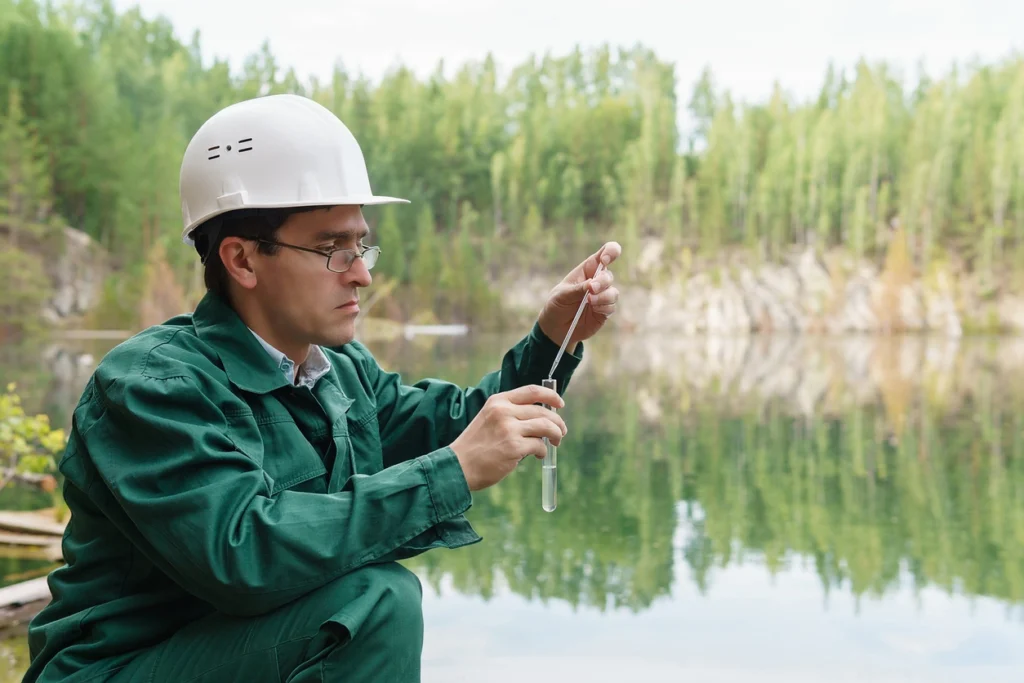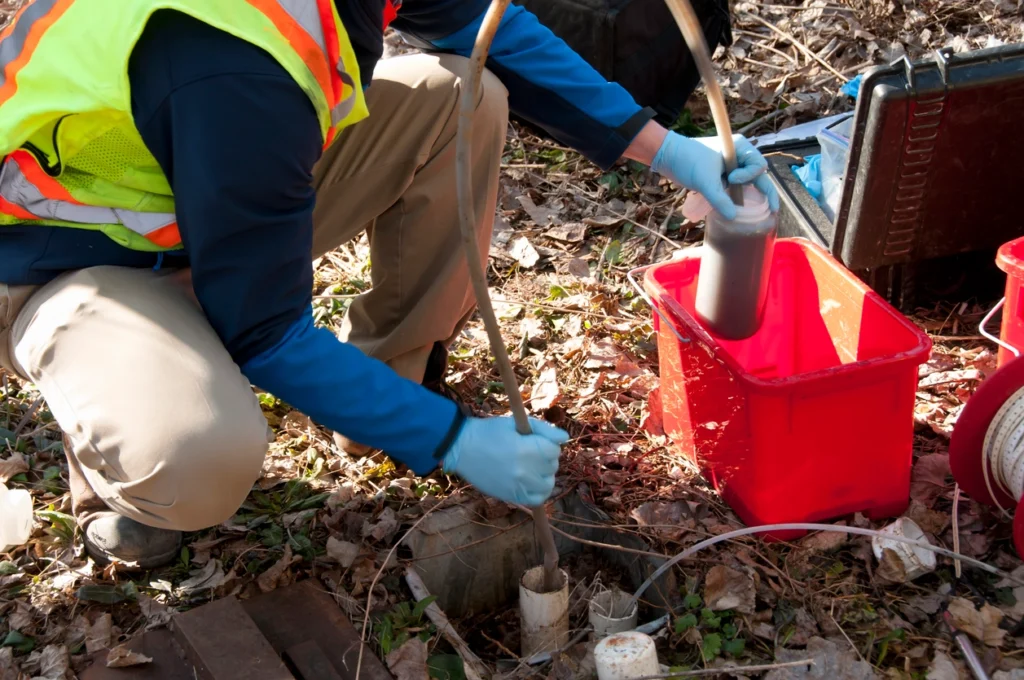The National Environmental Policy Act (NEPA) ensures that projects with potential environmental effects undergo a thorough review. One critical aspect of this assessment is groundwater contamination. Projects ranging from new landfills to industrial developments often require groundwater testing to comply with NEPA and protect this vital resource. This guide will walk you through when testing is necessary, the steps involved, and how to integrate results into your NEPA documentation.

When NEPA Requires Groundwater Testing
The decision to conduct groundwater testing for NEPA purposes isn’t always straightforward. The following project types frequently warrant investigation:
Construction and Excavation
Any project involving deep foundations, tunneling, or significant earthmoving can disrupt groundwater flow patterns or uncover existing contamination. This applies to large building projects, roadworks, or the installation of pipelines and underground utilities.
Industrial Facilities
Facilities handling chemicals, fuels, wastewater, or hazardous materials pose a risk of spills or leaks. Even seemingly benign industries might use solvents, cleaning products, or other substances of concern if leaked into the environment.
Landfills and Waste Sites
New landfills require rigorous design and monitoring to prevent leachate (contaminated runoff) from reaching groundwater. Existing waste sites, even closed ones, can have lingering contamination plumes.
Redevelopment
Projects on former industrial sites (“brownfields”) often undergo testing to assess pre-existing contamination. This is essential for determining clean-up needs before new development occurs.
Tower Developments
While the tower itself might seem low-impact, the foundation for cell towers, transmission towers, and even wind turbines can require excavation and the use of concrete. In sensitive groundwater areas, analyzing the risks is important.
Factors Affecting Groundwater Testing Scope
Keep in mind that the specific NEPA process, the lead agency involved (EPA, Bureau of Land Management, etc.), and site-specific factors influence testing requirements:
- Regional Geology: Areas with vulnerable aquifers (porous soil, shallow water table) warrant more scrutiny.
- Project Scale: Larger and more complex projects usually need more extensive testing.
- Proximity to Sensitive Resources: Being near drinking water wells, protected wetlands, or important water recharge zones increases the need for caution.

The Groundwater Testing Process
- Baseline Assessment: Gather data on the site’s history, local geology, known aquifers, and any existing contamination hot spots. This guides the sampling plan.
- Testing Plan: Develop a project-specific plan outlining the number and location of test wells, the depth of sampling, the contaminants to analyze, and the chosen lab methodologies.
- Implementation and Data Collection: Follow rigorous sampling protocols. Chain of custody documentation (tracking the samples) is crucial for data defensibility.
- Interpretation and Reporting: Analyze the lab results. A qualified hydrogeologist or environmental consultant can help assess the risks and prepare the report in a format suitable for NEPA submission.
Integrating Testing into NEPA Documents
Your groundwater testing efforts produce valuable data, but it needs to be presented in a way that supports your NEPA documentation. Here’s how to make it work:
Environmental Assessment (EA) vs. Environmental Impact Statement (EIS)
Tailor the testing scope and reporting to match the process:
- EA: Focus on identifying potential contamination risks. If major risks are found, this might trigger the need for a full EIS.
- EIS: Demands in-depth analysis. This includes potential long-term impacts of contamination, the spread of contaminants over time, and comparison of different mitigation options.
Presenting Results: Clarity and Context are Key
- Maps: Show sampling locations in relation to project components and surrounding features (wells, water bodies, etc.).
- Data Tables: Summarize contaminants detected, their concentration, and compare them to safe water quality standards.
- Non-Technical Summary: Provide a plain language explanation of the findings, what risks they pose, and what needs to be done to address them.
Addressing Uncertainty: Honesty Builds Trust
- Limitations: Acknowledge that testing provides a snapshot, not certainty. Undetected contamination could exist.
- Adaptive Management: Include plans for continued monitoring during construction, and outline steps to take if unexpected contamination IS found later. This shows you’re prepared.
Mitigation Strategies: Go Beyond Detection
- Project Redesign: Could you alter the project to reduce groundwater risks (e.g., shallower foundations, relocation of certain components)?
- Remediation Plans: If pre-existing contamination is an issue, how will it be addressed? (removal of contaminated soil, in-situ treatment, etc.).
- Long-term Monitoring: Often required, especially where risks remain. Specify the duration and type of monitoring proposed.

Is Something Always Found in Groundwater Testing?
A common misconception is that groundwater testing always turns up contaminants. While groundwater contamination is a serious concern, the reality is more nuanced:
Naturally Occurring Substances
Many groundwater sources contain some minerals (iron, manganese), dissolved gases, or even trace amounts of elements like arsenic. These are usually at levels harmless to human health, but might affect taste or require a filtration system.
The Importance of Baseline
Testing isn’t just about finding ‘bad’ things. It establishes the pre-project groundwater quality. This way, any future changes can be linked back to project activities.
Detection Limits Matter
Ultra-sensitive lab tests can detect substances in minute concentrations. It’s crucial to compare these findings to established safety standards for drinking water.
“Nothing Found” is Still Valuable
A clean groundwater test result provides reassurance to both project proponents and regulators. It demonstrates that the project area, at least to the extent tested, is unlikely to cause contamination problems.
Groundwater testing isn’t about fear-mongering. It’s about gathering accurate data to make informed decisions that protect both the environment and the success of your NEPA-regulated project.
Best Practices and Common Challenges
- Early Engagement: Consult with the lead regulatory agency early in your project planning to ensure your testing plan meets their expectations.
- Budget and Timelines: Groundwater testing takes time. Factor this into your NEPA process schedule and allocate sufficient resources to avoid delays.
- Community Concerns: If the public is worried about groundwater, be transparent about testing plans and results. Proactive communication often smooths the approval process.
Ready for Your Projects Groundwater Testing?
Groundwater testing is more than just a NEPA requirement; it’s sound environmental stewardship. By carefully assessing risks up-front, you can design projects that minimize harm to this valuable resource, protecting both public health and the environment.
If you need help with your groundwater testing, Diablo Green Consulting is here for you. Give us a call or shoot us a message now for a free, no-obligation consultation.
Frequently Asked Questions About Groundwater Testing for NEPA Compliance
Can I use my existing water well for NEPA testing?
Sometimes. If the well is in the right location and is constructed appropriately for sampling, it might be suitable. However, a dedicated monitoring well often gives more reliable data.
What if testing reveals contamination unrelated to my project?
You’re still obligated to report the findings to the relevant agencies. Your NEPA documents should discuss whether your project might worsen this existing problem.
How long does groundwater testing take?
It varies. The initial sampling is relatively quick, but lab analysis and report writing can take several weeks or even months for complex projects.
What’s the difference between groundwater testing and groundwater monitoring?
Testing provides a ‘snapshot in time’, while monitoring is an ongoing process of tracking water quality changes over an extended period. NEPA may require both.
Are there alternatives to traditional well drilling for testing?
Yes! In some situations, temporary sampling points or soil gas analysis can provide valuable information. An environmental consultant can advise on the most appropriate methods for your project.





